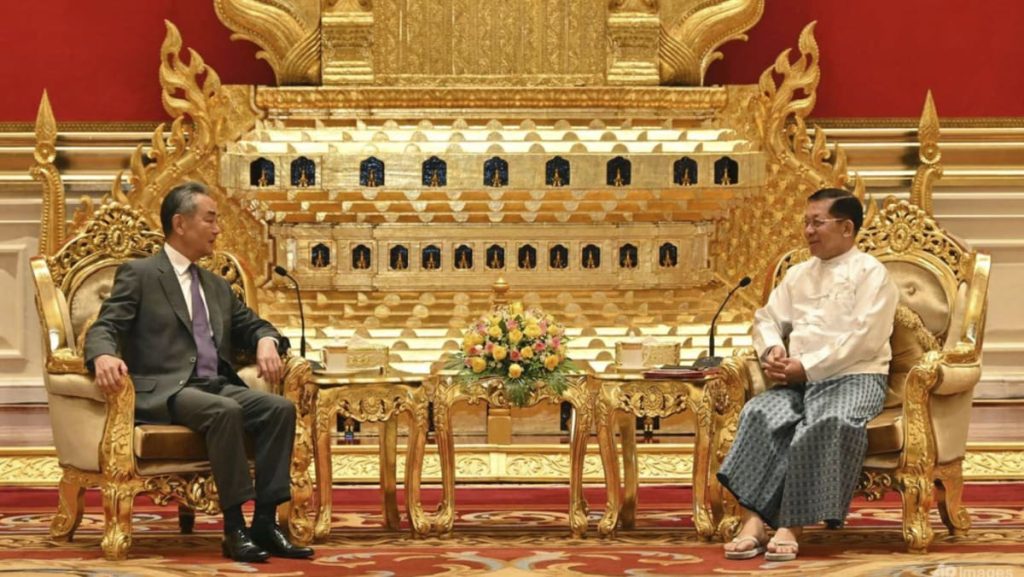Clashes between the military and ethnic armed groups in Shan state continued, with the Ta’ang National Liberation Army (TNLA) fighting junta troops in the towns of Hsipaw and Naungcho. Major-General Tar Bhone Kyaw confirmed these clashes to AFP. The Myanmar National Democratic Alliance Army (MNDAA) is another group involved in the fighting in northern Shan, but has not responded to requests for comments. In a significant development earlier this month, MDNAA fighters captured the military’s northeastern command in Lashio, which is home to about 150,000 people. This marked the first time opponents of the junta had achieved such a feat since the military’s 2021 coup. The capture sparked rare public criticism of the top generals by their supporters.
Following the capture of the regional command in Lashio, Min Aung Hlaing made allegations that the alliance was receiving weapons, including drones and short-range missiles, from unidentified “foreign” sources. This accusation has not been substantiated, but it is indicative of the tense and complex situation in Shan state. The conflict between the military and ethnic armed groups has been ongoing, with clashes occurring in various towns and regions. The TNLA and MNDAA are just two of the groups involved in the fighting, which has intensified in recent weeks.
The clashes in Shan state highlight the volatile nature of the political and security situation in Myanmar following the military coup in 2021. The coup precipitated a wave of protests and civil disobedience, with various groups and organizations calling for the restoration of democracy and the release of detained leaders, including Aung San Suu Kyi. The military’s crackdown on dissent has been brutal, with reports of systematic human rights violations and arbitrary arrests. In response, some ethnic armed groups have taken up arms against the junta, leading to increased violence and instability in certain regions.
The capture of the military’s northeastern command by MDNAA fighters in Lashio represents a significant blow to the junta and a symbolic victory for opponents of the regime. The fact that this is the first such capture since the coup underscores the strength and determination of some ethnic armed groups in their resistance to military rule. The junta’s accusations of foreign support for these groups suggest a possible escalation of the conflict, as external actors may become more involved in the fighting. This could further complicate efforts to resolve the crisis through dialogue and negotiations.
The ongoing clashes in Shan state also raise concerns about the humanitarian impact of the violence on local populations. The fighting has displaced thousands of people and disrupted their lives, making it difficult for them to access basic necessities such as food, water, and healthcare. Humanitarian organizations have struggled to provide assistance to those in need, as access to conflict-affected areas is often restricted or denied. The situation is further exacerbated by the COVID-19 pandemic, which has strained healthcare systems and limited the capacity to respond to the needs of vulnerable communities.
In conclusion, the clashes between the military and ethnic armed groups in Shan state are a stark reminder of the challenges facing Myanmar as it grapples with political turmoil and violence. The conflict has resulted in significant suffering for civilian populations, who bear the brunt of the fighting and its consequences. The international community must work to support efforts to de-escalate the violence and find a peaceful resolution to the crisis. Dialogue and negotiations between the various parties involved are crucial to ending the conflict and allowing the people of Myanmar to rebuild their country and secure a more democratic and inclusive future.


